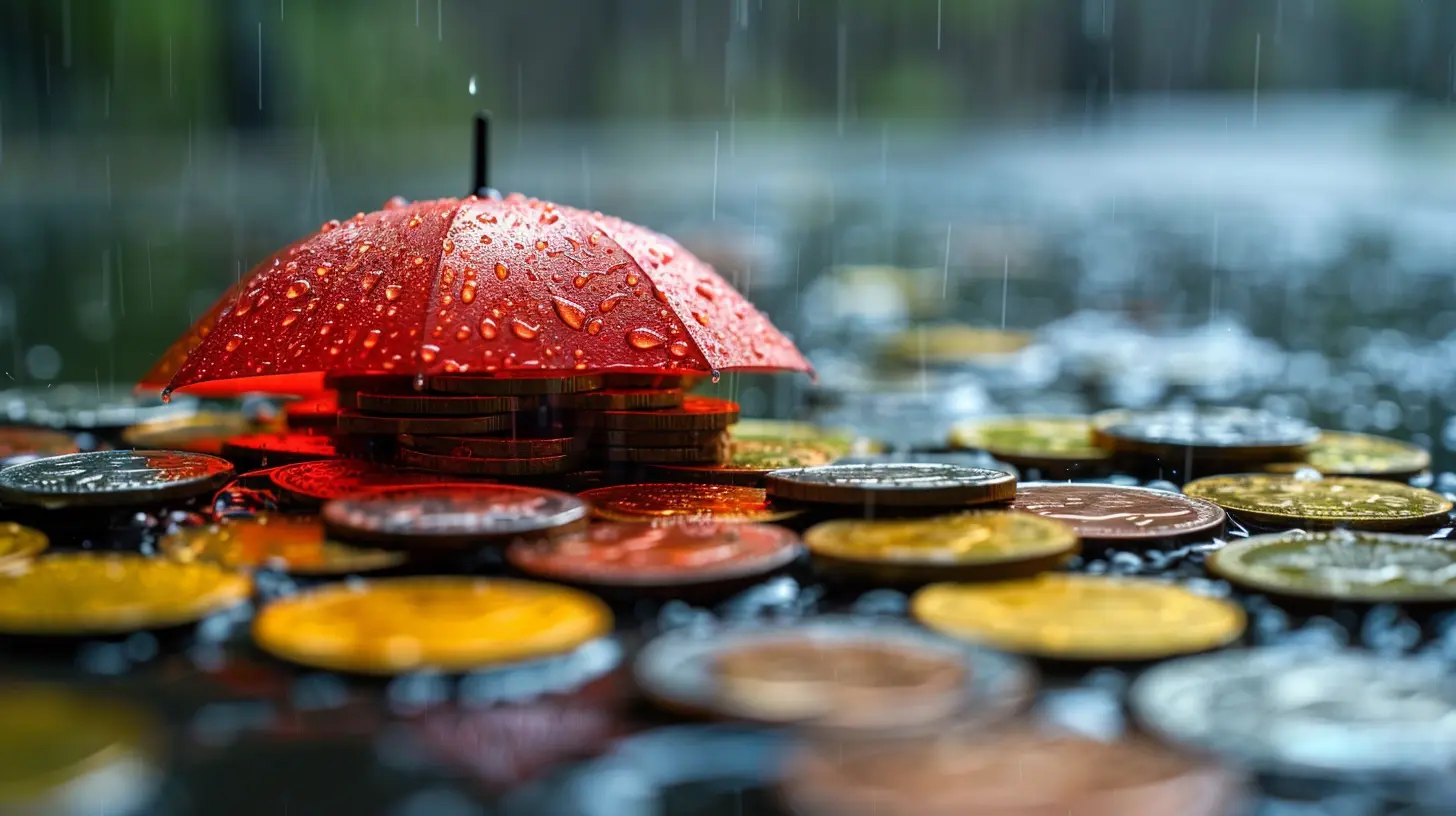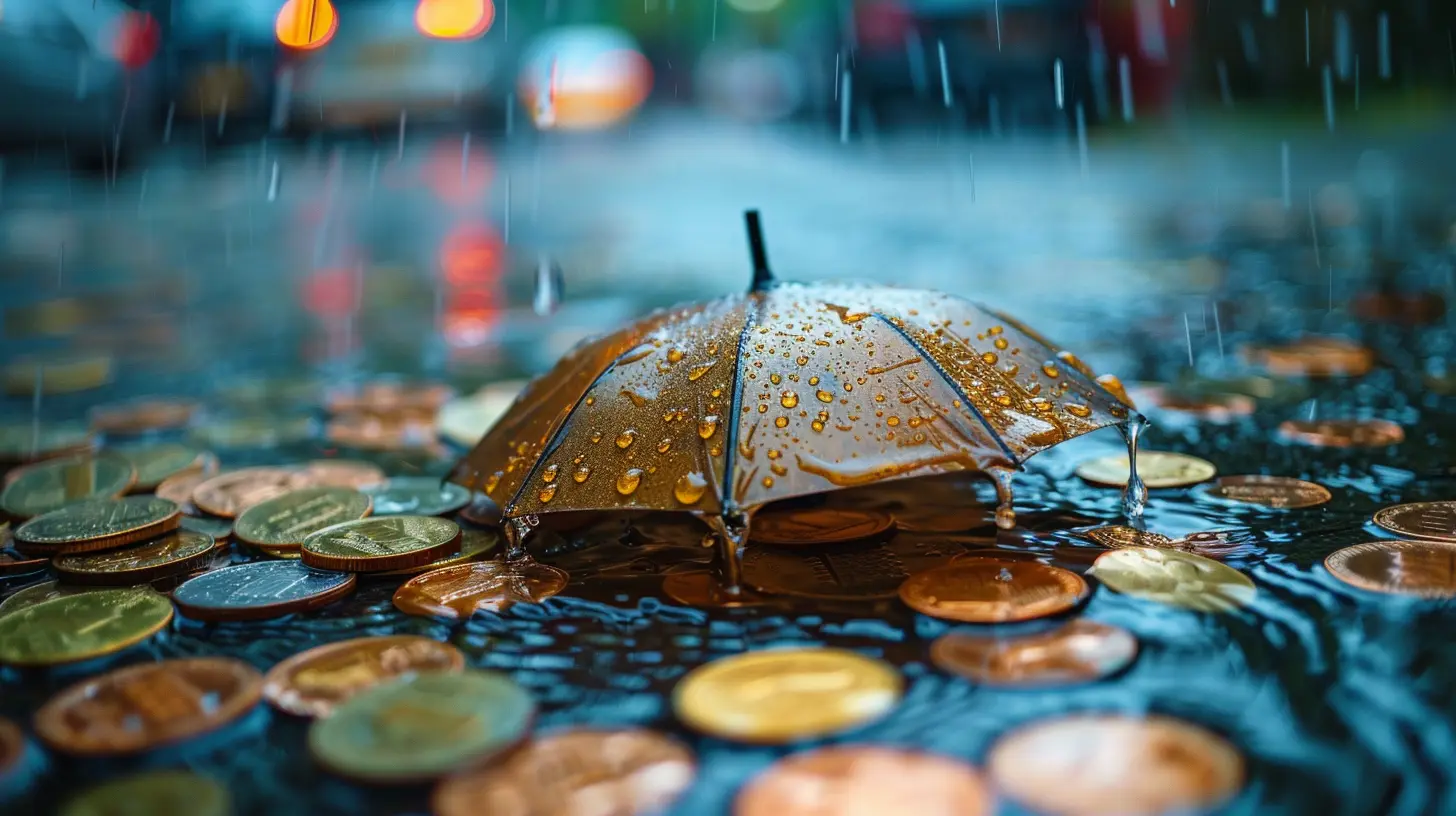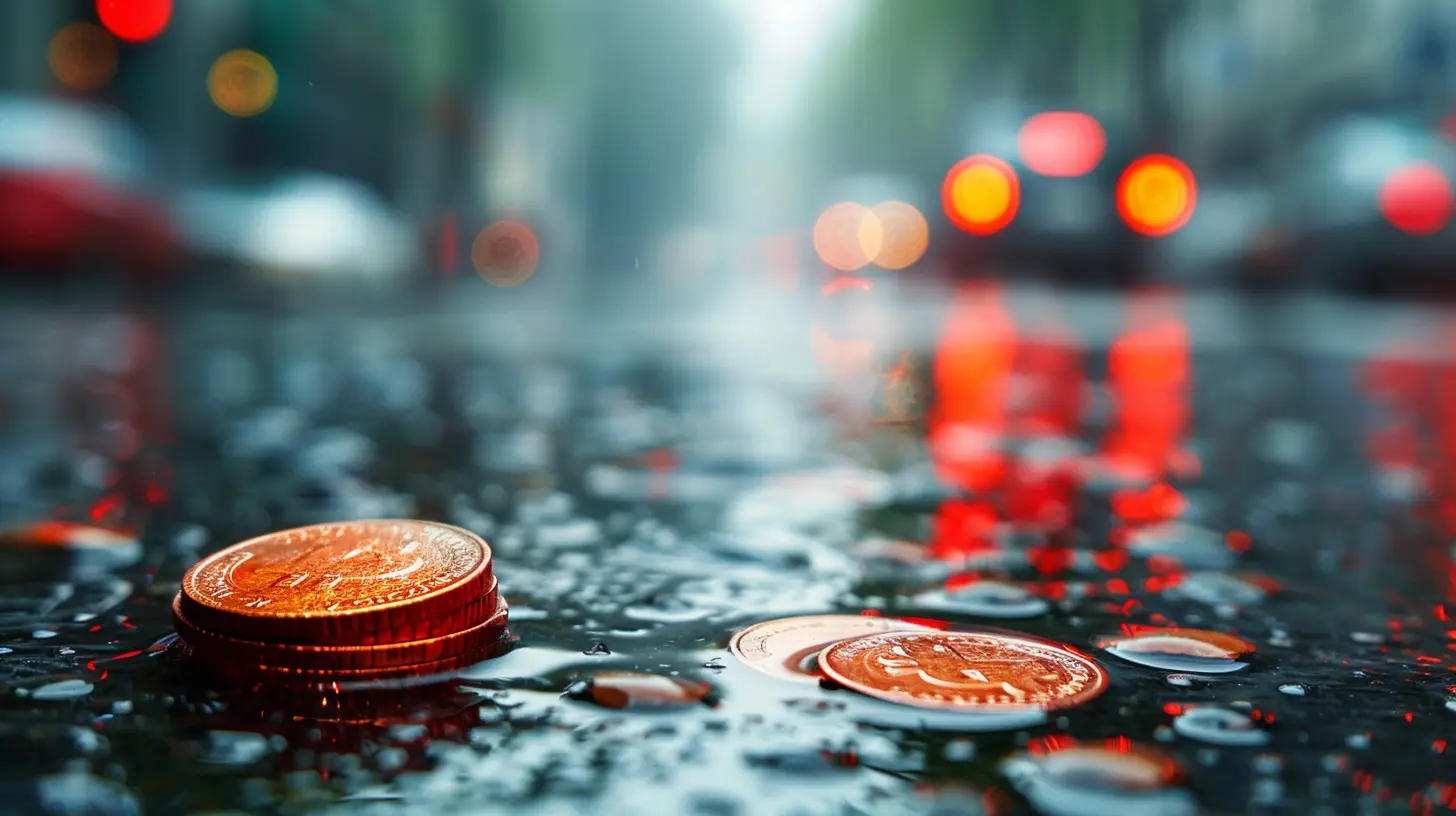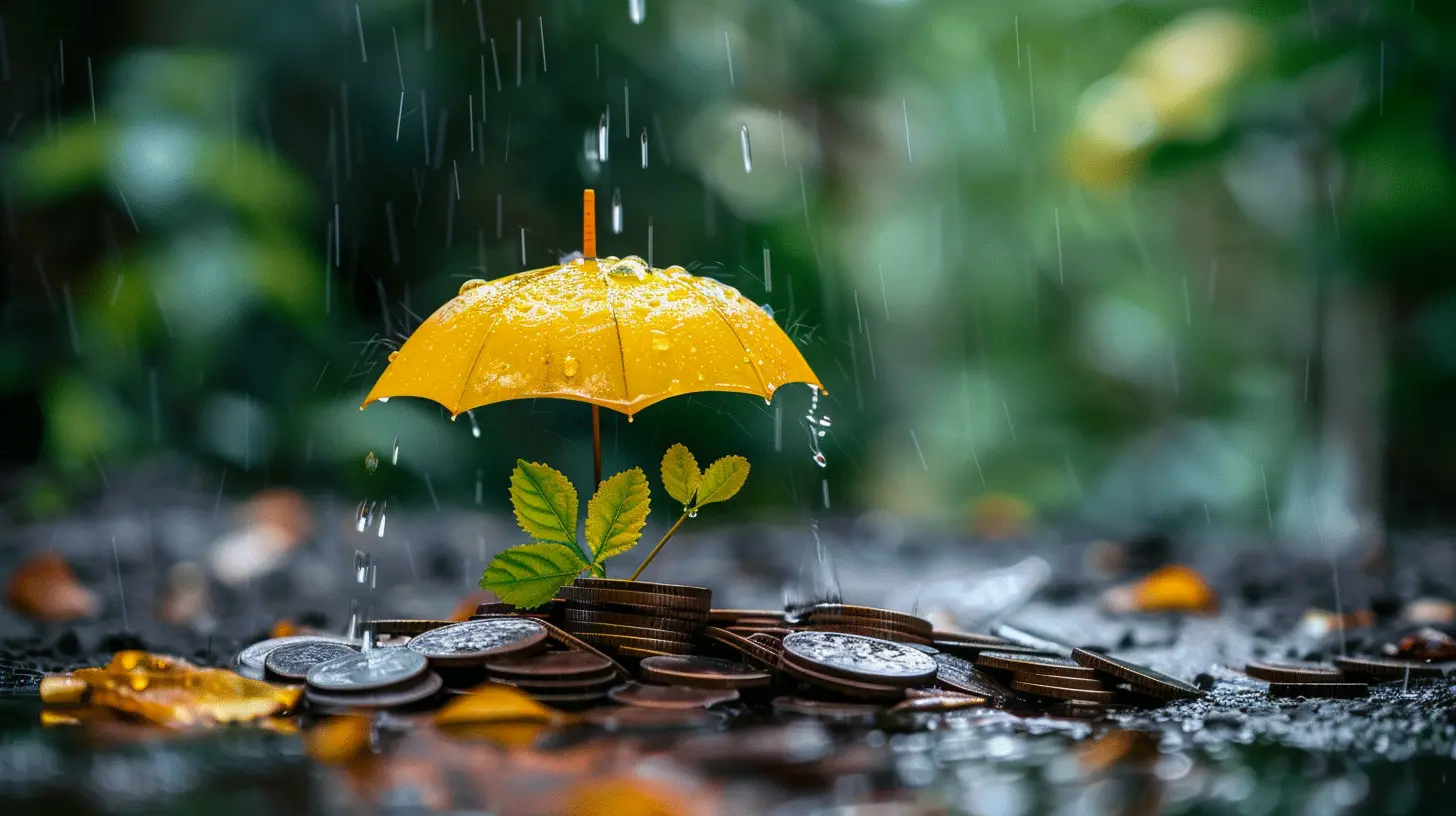Emergency Fund vs. Rainy Day Fund: What’s the Difference?
1 October 2025
Let’s face it — life has a funny way of throwing curveballs when we least expect it. One minute, you're sipping your morning coffee, and the next, your car won't start or your job is on the line. Yikes! That's why having a financial safety net is absolutely essential. But wait… is that an emergency fund or a rainy day fund we're talking about? Aren’t they the same thing?
Nope — not quite! While they might sound similar (and even feel a bit interchangeable), these two financial cushions serve different—but equally important—purposes. And today, we're going to break it all down so you can confidently build both, one step at a time.

The Basics: What Are These Funds, Anyway?
Before we jump into the nitty-gritty differences, let’s first understand what an emergency fund and a rainy day fund actually are.What’s a Rainy Day Fund?
Imagine you’re walking through life with a financial umbrella. The rainy day fund is there for those little showers — the minor, occasional expenses that pop up when you least expect them but don’t derail your entire financial game plan.Think:
- A surprise vet bill
- A broken toaster
- Car maintenance
- A leaky faucet
These expenses are annoying, sure, but not devastating. Your rainy day fund is like that trusty spare tire — you don't use it all the time, but when you need it, you're glad you have it.
What’s an Emergency Fund?
Okay, now think bigger. Way bigger.An emergency fund is your financial life jacket. It’s for those “uh-oh” moments that could sink your budget if you’re not prepared. We're talking about major, life-altering events.
Like:
- Getting laid off
- Unexpected medical emergencies
- Major car accidents
- Natural disasters wreaking havoc on your home
This fund is your financial fortress. It’s there to keep you afloat during those rough and stormy seas when your income might stop or your expenses suddenly skyrocket.

🔍 Key Differences Between Emergency and Rainy Day Funds
Alright, now that we've got the definitions down, let’s dive into the core differences. Think of this like comparing apples and oranges — both are fruit, but they taste totally different.1. 📏 Size of the Fund
This is probably the biggest (pun intended) difference.- Rainy Day Fund: Smaller. Usually a few hundred to a couple thousand dollars max. Enough to cover minor, surprise expenses without throwing off your monthly budget.
- Emergency Fund: Much larger. Financial experts suggest putting away 3 to 6 months' worth of living expenses. Enough to cover rent or mortgage, utilities, groceries, and insurance if you were suddenly out of work.
2. 🎯 Purpose
- Rainy Day Fund: Covers short-term, non-catastrophic expenses. Think of it as your “life’s little bumps in the road” fund.- Emergency Fund: Meant for true emergencies that impact your livelihood. It’s your Plan B when things really go south.
3. 🕒 Usage Frequency
- Rainy Day Fund: You might dip into this relatively often — maybe a few times a year.- Emergency Fund: Ideally, you rarely touch this fund. It’s like breaking the glass in case of emergency.
4. 🏦 Where to Keep It
Both of these funds should be accessible — but not too accessible (hello, impulse buys).- Rainy Day Fund: A high-yield savings account or even a separate checking account works great.
- Emergency Fund: Also best kept in a high-yield savings account — somewhere safe, liquid, and easily accessible, but perhaps out of sight so you’re not tempted to use it for a vacation or splurge.

🎯 Why You Need BOTH Funds
Now you might be wondering — Do I really need both?Short answer: Absolutely!
Let’s say your car breaks down and it costs $600 to fix. That's annoying, but manageable — if you've got a rainy day fund.
But what if you lose your job next month during an economic downturn, and now you’re looking at months of no steady income? That’s when your emergency fund steps in like a superhero.
If you only have one fund, you could quickly burn through it on minor stuff, leaving you high and dry when a real emergency hits. Keeping the two separate ensures you’re prepared for both the small mishaps and the big crises.

💡 Tips to Build Your Rainy Day and Emergency Funds
Alright, you're convinced. You're ready to start building your financial safety net. But where to begin?Let’s start small and work our way up.
Step 1: Start with Your Rainy Day Fund
This one is easier and faster to build since the target amount is lower. Start by setting aside as little as $10 or $20 each week. Over time, this adds up!Here’s how:
- Set up automatic transfers to a dedicated savings account.
- Round up your purchases and save the change.
- Use cash-back rewards or refunds to pad the account.
Aim to save $500 to $2,000 depending on your lifestyle and responsibilities.
Step 2: Tackle the Emergency Fund
Once your rainy day fund is healthy, shift your focus to the emergency fund. Calculate your monthly expenses — rent/mortgage, utilities, food, insurance, minimum debt payments — and multiply by 3 to 6.If your monthly expenses are $2,500, you should aim for $7,500 to $15,000.
That might sound like a mountain to climb, but don’t panic!
Try these tips:
- Funnel any side hustle income directly into this fund.
- Use tax refunds or work bonuses.
- Sell unused items around your home.
Saving steadily and consistently is key. You don’t need to hit your goal overnight!
🧠 Pro Tips to Stay on Track
- Label your accounts: Name them something fun like “Uh-Oh Fund” and “Financial Fortress” — it helps keep your goals top-of-mind!- Replenish when used: Treat withdrawals like a loan to yourself. Pay yourself back as soon as possible.
- Don’t invest emergency cash: Risky investments can go south — and your emergency fund isn’t the place to take chances.
🙋♂️ Common Questions (Let’s Clear Up the Confusion!)
Can I combine the two funds?
Technically, yes, but it's not ideal. Mixing them can make it harder to track your progress and might lead to accidentally spending too much on non-emergencies.What if I can’t save much right now?
Even saving $5 a week makes a difference. Progress is progress. The goal isn’t perfection, it’s protection.Should I pause debt payments to save?
Not entirely. But finding a balance is important. Try allocating slightly more towards savings each month until you have a small cushion, then refocus on debt.🌈 Final Thoughts: Peace of Mind Is Priceless
Life is unpredictable — but your finances don’t have to be. Having both a rainy day fund and an emergency fund is like installing financial airbags. You hope you never need them, but you’ll be relieved they’re there when life throws a surprise punch.Building these funds isn’t just about dollars and cents. It’s about peace of mind, confidence, and regaining control over life’s twists and turns. So grab your savings umbrella and your emergency lifeline — and start saving today!
Because when it rains, it pours…and when it floods, you’ll be ready.
all images in this post were generated using AI tools
Category:
Emergency FundAuthor:

Audrey Bellamy
Discussion
rate this article
1 comments
Jade McKellar
Understanding the distinction between an emergency fund and a rainy day fund is crucial for effective financial planning.
October 9, 2025 at 2:17 AM

Audrey Bellamy
Absolutely! Recognizing the difference helps allocate funds appropriately for unexpected emergencies versus smaller, non-urgent expenses.


